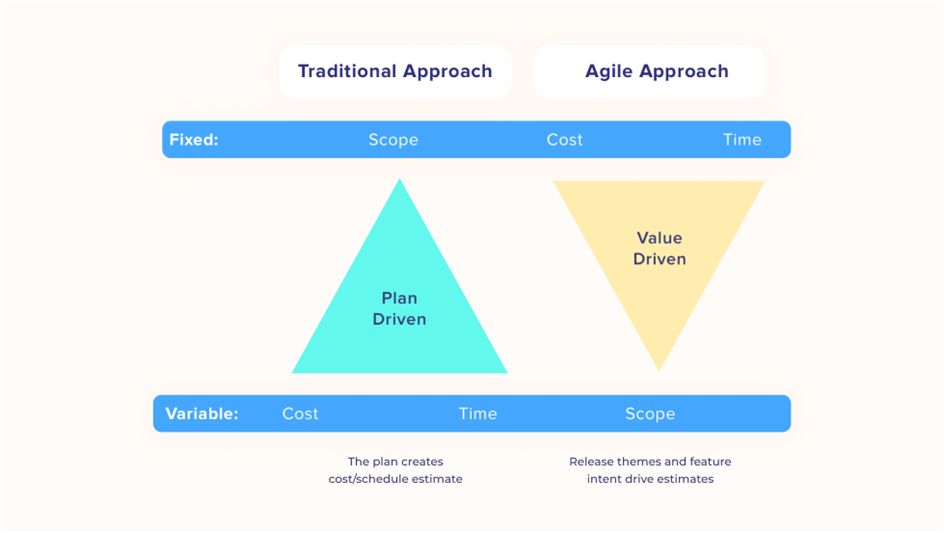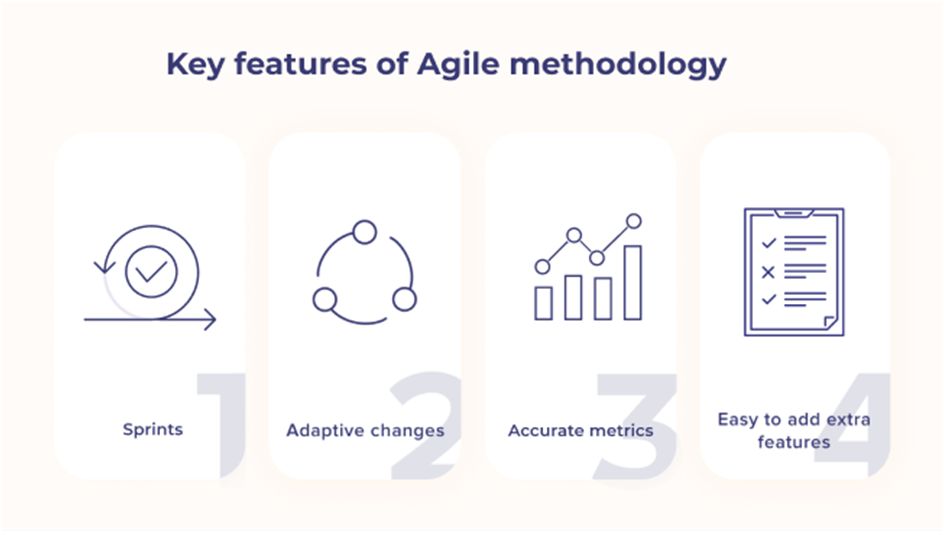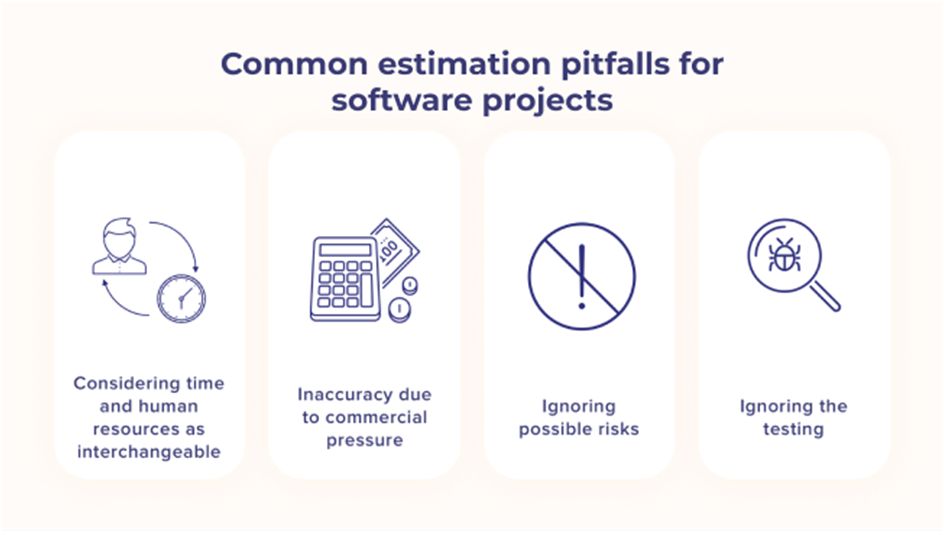In the modern business world, timing, revenue, and ROI mean everything. No doubt, you won’t invest in the software idea without ensuring you have enough money for its implementation. Thus, when deciding to create your own project, one of the first questions that might be hovering in your head is, “How much will it cost?”.
There are different software project estimation techniques that will help you calculate your future idea correctly. I want to share the most popular ones that apply to diverse projects.
Why Estimate the Software Project in Man-Hours
Calculating in man-hours enables you to measure the project cost based on the specialist expertise and their contribution to the final results. The time is defined by the evaluation dependencies of all tasks. Therefore, you can easily calculate the cost by multiplying hours by time after getting the price for man-hours from a selected software development company.
A man-hour implies the amount of work performed by software engineers during one hour within an hour of uninterrupted work. Let’s break the term into two parts — man and hours — to better understand the meaning.
Man. The project implementation time depends on specialists’ expertise. For instance, senior programmers require less time to fulfill the task compared to junior ones. Thus, a dedicated development team needs to include different level specialists to submit an accurate software project estimate.
Hours. This means the hour of continuous work. If it took three days for developers to complete the task, but in fact it took 3 hours — it’s still 3 hours. It’s better to streamline the work schedule during planning to reduce delays.
Both of these components are crucial to figuring out the project time accurately. For successful planning, all the correlations and expectations for required resources need to be appropriately managed. In this way, none of the specialists sit around waiting for others to complete a particular part of the task.
Benefits of Agile Approach for Software Development Estimation
The traditional approach implies you can’t make changes to the project once it’s started. So the workload and software features are fixed. In turn, agile project management is flexible to modifications at any stage of software development.

The drawbacks of the conventional approach:
- Every software, especially massive one, may require some changes during the development lifecycle. In the case of a traditional approach, all the project-related requirements are fixed.
- Variable cost. The conventional approach demands the price to be variable. This results in unpredictable risks since you can’t control the return on investment (ROI).
- Variable time. The same applies to time, it should be fixed. As a customer, you want to know how much time it takes to complete the project to gain a competitive advantage or align with important industry date.
That’s why most software development companies leverage Agile software project estimation methods to get fixed time and cost and yet be flexible to modifications.

Sprints. The project splits into sprints (fixed periods) that signify a completed part of the specific software functionality. Each sprint has its fixed price. After the first sprint is fulfilled, the business analyst reevaluates the next one based on previous project experience. Agile software development methodology prevents business owners from unplanned expenses and enables them to add advanced functions or update the previous ones during the software development lifecycle.
Adaptive to changes. This is the core features of the Agile approach. As soon as the project starts, your team is ready to make any modifications required to deliver high-quality products. All you need to do is to provide them with feedback and relevant information. If the change doesn’t affect the price, you won’t need to pay a penny. If the price is lower than contract one, it can be reevaluated.
Accurate metrics. Unlike traditional models, Agile methodology utilizes more relevant and precise metrics to evaluate project performance. It focuses on receiving great results and streamlining performance due to customers’ requirements rather than just time estimation. Agile implements essential metrics like lead time or cycle time to recognize imperfections and find new ways to strengthen them.
Easy to add extra functionality. In our fast-paced world, you may require to add additional features or port your project to another platform. Conventional price projects can’t handle it compared to Agile ones required just adding an extra sprint to project backlog.
Software Project Estimation Techniques You Can Apply
This paragraph will guide you through the most demanded software project estimation methods that help you evaluate your project successfully.
Planning Poker
Planning poker is a consensus-based estimating technique. It’s utilized to evaluate the product backlog. At the start of the planning poker session, every programmer in the team keeps a deck of planning poker cards. Each card has a value — 0,1,2,3,5,8,13,20,40 and 100.
The product owner provides features to the team of developers. After that, they discuss the project’s functionality to understand all of its requirements clearly. When they’re done with the meeting, each team member privately picks one card to show their estimate. If the value selected by all programmers is the same, it becomes the project’s estimate. If not — they discuss their assessment further. This process continues until all the software engineers select the same estimated value.
Comparison to the Previous Projects
Analogous estimation is the fastest way to evaluate the software product. The team compares the project’s price with any similar ones they’ve delivered before to come up with a time estimate of the current project. However, this technique has poor accuracy due to the uniqueness of each project. Even if the apps have similar features. This is considered to be a rough estimate.
Top-Down & Bottom-Up
When employing a top-down software development estimation method, the process is broken down into particular features, and each of them is estimated individually. After that, the team summarizes the result to provide a full-time project estimation. In contrast, bottom-up is evaluating the project as a single mechanism. If the values vary, the project managers need to identify the reason and reach the gold middle between those two techniques.
Expert Judgment
Expert judgment is the easiest way to estimate the software project, but you need to ensure high professional standards. This technique implies that the estimate is made based on specialist experience and their gut feel.
Let’s say your company got a request to calculate the cost of creating a mobile wallet. As a project manager, you have to execute many estimations on the planning stage — total estimate, timeline for a project, and the total cost in which this type of project should be done. One of the things you can do in this planning stage is expert judgment. It means that you can take advice or judgment from any other project manager who has performed this type of project before. Or you can talk to a technical lead in your team who already had experience in a similar project. To give you a hint, here are a couple of questions you may consult on:
- How much may this project cost?
- How much would the timeline be required?
- Which type of complexity will be occurred in this project type?
Parametric Estimating
This method is much like estimation by analogy, but it provides more accurate data. It also applies past project information, but it seeks to adjust data to show the uniqueness of each product. Parametric estimation engages a statistical approach:
- The first step is to identify all software development factors such as business requirements, non-functional requirements, project complexity, and required technology.
- Next is obtaining data about the required work of past projects to prorate it to evaluate the current software project.
- Finally, the cost is pinpointed by the experiential relationship between the components involved and the total factors of the projects. Then, scalability is utilized for correctness.
Three-Point Estimates
The three-point estimate splits the duration for a task into three ranges of estimates: optimistic, pessimistic, and most likely. Then, the average estimate is taken. One of the benefits of this method is that it lowers the chance of an overstated estimate. Moreover, it’s a highly accurate form for software estimation. The estimate can be carried out by different experts for improved precision.
Pitfalls to Avoid During Software Project Estimation
Below you’ll find the common misconceptions when it comes to project estimation.

Considering Time and Human Resources as Replaceable
When release day is right around the corner, the speed becomes critical. Then, it’s easy to conclude that more programmers should be added to accelerate the development, right? The answer, no. The time and people are adaptable only when there are no dependent tasks and other tricky factors.
Each new specialist added to the team will need to establish cooperation with other software engineers and get acquainted with the project. Thus, the bigger the team is, the more time and effort it will require to set up a smooth workflow within the group.
Task dependencies are another thing to pay attention to when performing software project estimation. For example, pregnancy couldn’t be named a “9 man-month” project because you can’t quicken this process by adding more people. The same with the project. A well-developed project plan has to consider the dependent tasks. Hence, it’s vital to assign one project to one team, excluding changeover. It will lead to increased productivity, thus, client satisfaction.
Incorrectness Due to Commercial Pressure
It’s prospective that business goals will affect the project estimates. On the one hand, the sales team tends to increase revenue while reducing man-hours. On the other hand, project managers that strive to deliver secure products expand it. Thus, the gold middle should be found.
A dozen assessments in the IT industry are influenced by commercial pressure. The best scenario is to reduce the estimate while reducing the project scope. Otherwise, it may cause some significant issues in the long run.
One of the ways to provide clients accurate software project estimates is to minimize commercial efforts. A good estimation plan should contain the total amount of work, development speed, and delays. As a business owner, you want to build a user-oriented product to generate revenue in the long run. This way, don’t rush to cut the project cost before considering all the pros and cons.
Overlooking Possible Risks
The majority of software projects engage a lot of coding tasks that are intertwined. Therefore, in the beginning, it’s challenging to say precisely how much time each project requires due to unforeseen circumstances. That’s why it’s critical to put in possible risks and provide a “min-max” time/cost estimates range.
Undervalue the Testing Part
Often, companies don’t pay enough attention to the testing stage, considering it an additional step that might be skipped. However, every time the programmer completes a particular part of the work, it must be tested. Finally, before releasing the app to Google Play, App Store, or taking it to the live server, it’s vital to conduct smoke tests.
The testing part is frequently ignored during project cost estimation or included late when the development is almost ready. And that’s a huge mistake. Testing is a critical phase of your product development. It allows you to ensure your product is bug-free and works as expected. In addition, every time the QA team conducts a test, they improve the user experience. Ideally, 25% of the project time should be spent on testing within the overall development cycle.
Wrapping Up
Despite the fact, it might be pretty confusing to select the proper software project estimation technique, evaluation is a vital part of the project development. It’s needed in order to deliver a high-quality product on time within the planned budget. There are many pitfalls and expertise requirements to do it correctly so that all the stakeholders are pleased. Nevertheless, experienced IT vendors leverage modern project estimation methods to generate it for customers in the most accurate way.
If you want your project estimation to be executed at the expert level, you may consider outsourcing your app development to one of the popular tech hubs. The core advantage of this approach is that you get diversified specialists with extensive experience running different software projects.

Kate Orekhova is a tech writer at Cleveroad. A writer by day and a reader at night, she’s keen on technology and innovations. Her passion is to tell people about the latest tech trends in the world of IT.